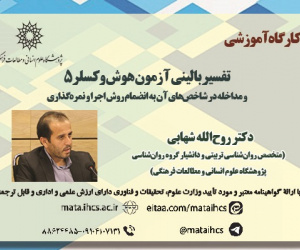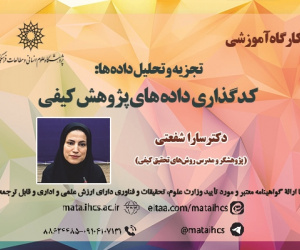تاثیر چند جانبه گرایی تاکتیکی بر جهت گیری و نقش ملی ایران در جنوب غرب آسیا
آرشیو
چکیده
در سال های قرن 21 زمینه برای تغییرات ژئوپلیتیکی در جنوب غرب آسیا به وجود آمد. هرگونه جابه جایی در موازنه قدرت تأثیر خود را در سیاست منطقه ای و الگوی راهبردی کشورها به جا می گذارد. ایران از راهبرد چندجانبه گرایی و سیاست همسایگی برای نقش یابی موثر در جنوب غربی آسیا بهره گرفت. علت اصلی بهره گیری از چنین انگاره ای را می توان ماهیت بحران ساز و پرمخاطره محیط منطقه ای ایران دانست. «سائول کوهن» مفهوم «کمربند شکننده» را در تبیین ویژگی های ساختاری غرب آسیا به کار گرفت. کوهن بر واقعیت های ژئوپلیتیکی تأکید داشت. در چنین شرایطی مهمترین مسئله کشورها از جمله ایران آن است که از چه سازوکارهایی برای امنیت سازی منطقه ای بهره می گیرند؟ ایران منطقه ای نیازمند همکاری های ژئوپلیتیکی، اقتصادی، تاکتیکی و راهبردی با کشورهای منطقه ای است. نقش یابی امنیتی ایران در فضای کمربند شکننده جنوب غرب آسیا و خاورمیانه در شرایطی حاصل می شود که درک دقیقی نسبت به شکل بندی قدرت در سطح منطقه ای و سیاست بین الملل داشته باشد. مفروض مقاله آن است که جنوب غرب آسیا در زمره حوزه های ژئوپلیتیکی آشوب زده بوده و امنیت سازی نیازمند پیچیدگی های مبتنی بر کاربرد قدرت، انعطاف تاکتیکی، همکاری های منطقه ای و مشارکت سازنده خواهد بود. پرسش اصلی مقاله آن است که «ایران در فضای کمربند شکننده جنوب غرب آسیا، از چه راهبرد منطقه ای برای امنیت سازی می بایست استفاده نماید؟» فرضیه مقاله به این موضوع اشاره دارد که «راهبرد ایران برای امنیت سازی در محیط بحرانی و آشوب زده می بایست مبتنی بر نشانه هایی از چندجانبه گرایی و همکاری سازنده با کشورهای منطقه ای باشد.» در تنظیم مقاله از رهیافت «کمربنده شکننده سائول کوهن» استفاده خواهد شد. در تنطیم مقاله از «روش تحلیل داده ها» استفاده خواهد شد.The Effect of Tactical Multilateralism on the Orientation and National Role of Iran in South West of Asia
The 21st century of Southwest Asia has exhibited conditions which is ready for geopolitical changes. The ensuing shifting balances of power have affected various countries’ regional and strategic policies. Within this period, Iran has emerged as a benefactor of neighboring policies and has sought to implement multilateral strategies, carving out its own role in Southwest Asia. The main factors contributing to Iran’s success have been the crisis and dangers plaguing the region. Saul Cohen’s “shatter belt” has provided us with a concept to help explain the structural features plaguing Western Asia. In addition, Cohen’s shatter belt places a strong emphasis on weak geopolitical conditions. Within these conditions, a serious question for Iran, emerges: what mechanisms can be employed by Iran to ensure and provide regional security? Multilateralism of Iran is in need of geopolitical, economic, tactical, and strategic cooperation with its regional neighbors. Iran’s role in mapping out its larger strategy of security within the shatter belt of Southwest Asia and the Middle East can only be achieved through a precise understanding of the formation of power at the regional and international political level. The assumption of the article is that securitization in Southwest Asia, a region permeated with complexities and geopolitical turbulence will require the use of power, tactical flexibility, regional cooperation, and constructivist participation. The main question of the article is: within the fragile and turbulent region of Southwest Asia, what strategy should Iran employ to ensure regional security? Adopting Cohen's “shatter belt” as a framework, and further employing the methods of data analysis, this article attempts to demonstrate that Iran's strategy for ensuring regional security in the given chaotic environment should be based on approaches of multilateralism and constructivist cooperation with neighboring countries.







